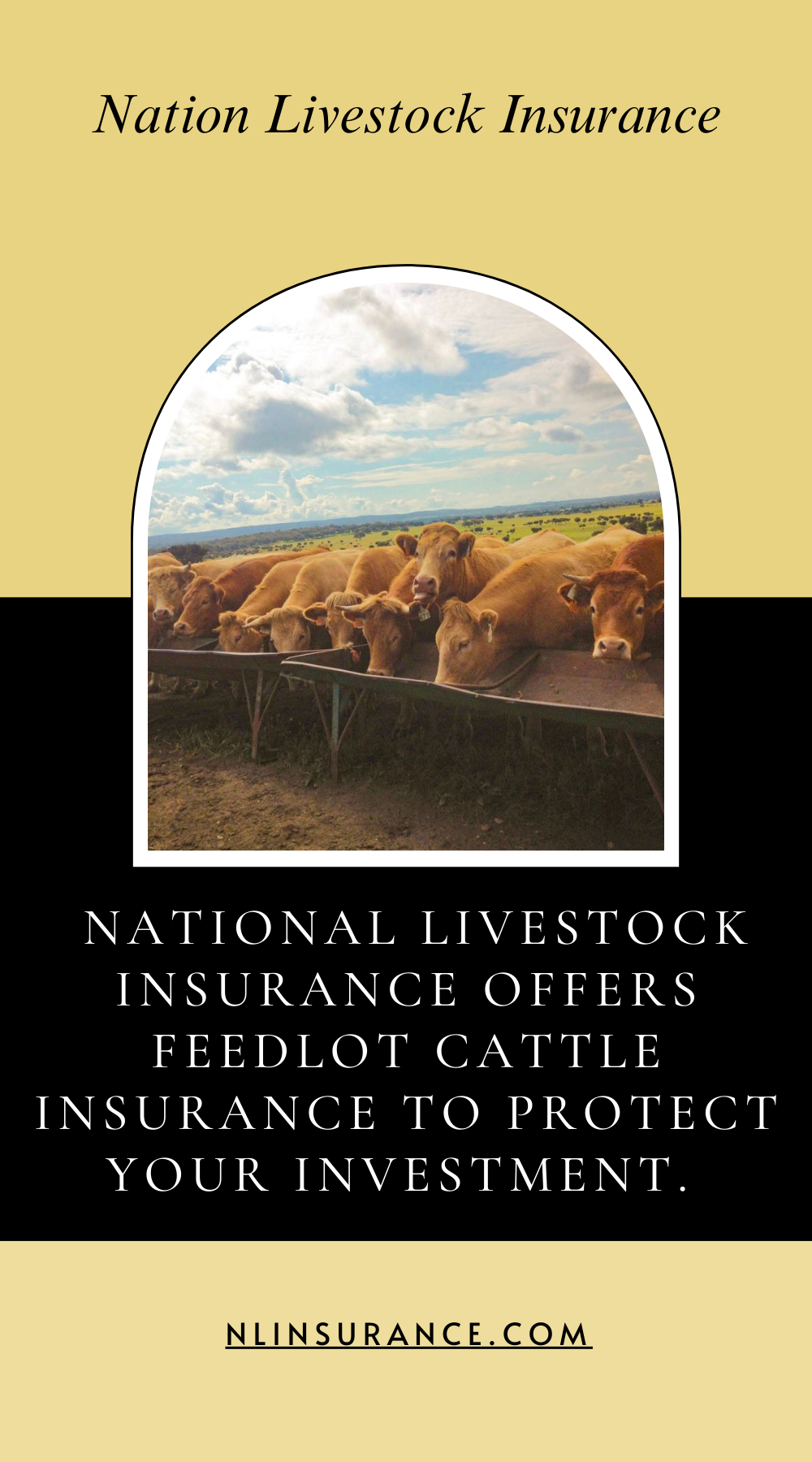Out here around Dumas, Texas, a feedlot isn’t just a business, it’s a way of life. Moore County leans heavily on agriculture and livestock, with roughly 180,000 head in ranches and feedlots spread across the region, and over 5,000 to 7,500 cattle processed daily. Industry giants like Dumas Feedyard LLC and Texas Beef Producers operate alongside smaller pens, all exposed to the same High Plains risks. That’s where National Livestock Insurance’s Feedlot Cattle Insurance steps in, it’s designed to protect your cattle’s value when the unexpected happens.
This policy strictly covers cattle death from specific perils, no vet bills or illness payouts are included. Instead, it follows a valuation schedule, so if a head is lost, the payout reflects current market value. Covered causes include fire, lightning, windstorms, flood, drowning, building collapse, theft, vandalism, and blizzard-related smothering. On top of that, you can add optional protection for hypothermia, carcass removal, and contaminated feed or water.
Dumas sits on the Southern High Plains, at around 3,648 feet of elevation, and experiences over 260 days of sunshine a year. Summers regularly hit mid-90s, pushing ambient heat up during July and August . Meanwhile, winters can swing suddenly. Despite modest snowfall overall, blizzards roll through unpredictably, causing suffocation in penned cattle .
Sudden storms bring lightning, high winds, and heavy rain. Flash floods can drown animals trapped in pens. A July thunderstorm might drench pens, contaminating water systems; a barn collapse in spring gusts can injure or kill cattle. Even theft or vandalism isn’t unheard of in the remote countryside. That means cattle are at risk year-round, from heat, cold, storms, flood, and human interference.
Rather than generic payouts, the valuation schedule determines market-based per-head values. Whether you're feeding black Angus steers or Herefords, compensation matches the real-time cattle market. No guesswork, no surprises.
Fire and lightning frequently accompany summer storms. One bolt could ignite hay, fencing, or machinery, killing cattle in its path.
Windstorms can bring down buildings or fences suddenly, causing traumatic losses.
Flash floods, though Dumas sees only about 20 inches of rain a year, can come fast. Heavy rain days, usually May through August, produce these deluges . Pen flooding overnight can drown cattle before anyone finds them.
Building collapse from wind, structural fade, or heavy snow can crush cattle in the pens, too.
Blizzard smothering is a historical risk, stretching back to those “Big Die-Up” winters . Sudden snow drifts can trap penned cattle in minutes.
Drowning deaths can also occur in tanks or pen washouts after storms.
Theft or vandalism, thanks in part to the Texas & Southwestern Cattle Raisers Association’s anti-theft initiatives, are rare but real threats.

.png)
Hypothermia coverage is crucial when unexpected cold fronts cause temperature dips. Even if snow isn’t falling, downturns can kill cattle overnight.
Contaminated feed or water coverage is especially relevant after storms or irrigation failures. Feed tanks can overflow; pests spread; chemicals drift; cattle get sick or die.
Carcass removal is a necessity, not a convenience. After any mortality event, cleanup is time-sensitive and costly. That coverage helps you remove remains safely, without taking a hit to your budget.
Picture a spring storm with hail and wind knocking out a fencing section overnight. Pens flood and cattle drown. You report the loss, share vet or field notes, and photo evidence. Adjusters pay per schedule, plus carcass removal.
Or imagine late December’s sudden blizzard. Pens drift deep and cattle smother. Same routine, same peace-of-mind payout.
Fire strikes in July, caused by lightning; a barn burns, cattle perish. Lightning coverage handles the loss.
A feed tank overflows after a heavy June rain, contaminating fodder. Cattle ingest it and die. Contaminated feed protection pays for the loss.
Theft hits, a pen cut, cattle stolen in the night, coverage applies. You’re made whole again.
In each case, no vet fees are covered, but your herd’s value is preserved.
Insurance works best when combined with good management: maintain drainage, inspect pens regularly, secure fencing and barns, shade troughs, and provide water. Keep trailers in shape, especially for transport in summer or winter. Careful management reduces claims and improves herd health, and preserves coverage validity.
When a covered event occurs, report promptly. Take clear photos, get a vet or field statement, share incident details and weather reports. Our adjusters are familiar with Southern Plains operations and will assess quickly. Payment is based on your valuation schedule; carcass removal and other riders apply where chosen. The Hartford’s financial strength supports fast, reliable payouts .
Whether it's a 500-head pen or a 50,000-head yard, valuation schedule coverage scales. You choose riders thoughtfully, no overpaying, but full protection for your operation. As your herd changes, so can your coverage.
National Livestock Insurance has focused on livestock since 1972. We’ve seen feedlot life, weather trends, and cattle needs evolve. Our local Amarillo agents know Dumas’s weather swings, land, and feedlot rhythms. We don’t just sell policies, we walk pens, consult on seasonal risks, share weather updates, and help you update your schedule. That’s not service—it’s partnership.
In Dumas, feedlot cattle face many threats such as heat stress in summer, cold or blizzard in winter, flood and windstorms in spring, plus fires and thieves. Feedlot Cattle Insurance by National Livestock Insurance fills a gap that vet care and facilities can’t, protecting cattle value legally and financially.
This insurance ensures you’re compensated fairly, based on valuation. Optional support for hypothermia, contaminated feed or water, and carcass removal fills the real gaps feeders face. Proper management keeps claims valid. Swift, fair payouts backed by The Hartford's A+ rating keep yards running.
Call or email our team today. Let’s walk your feedlot, assess needs, and build a policy that keeps your herd, and your livelihood, secure through every seasonal swing.